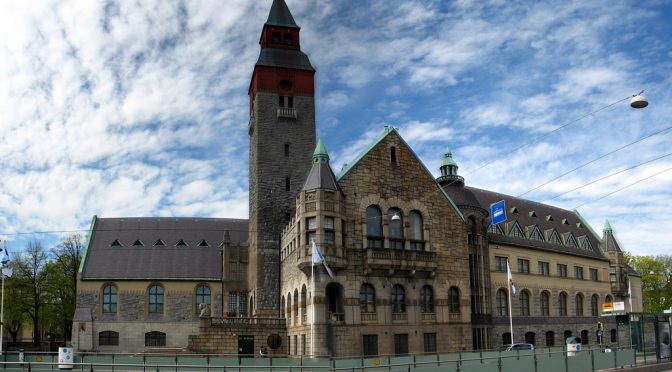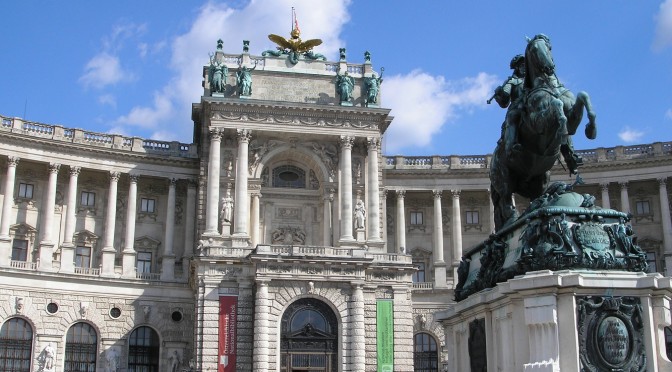The symposium takes place on Monday 5 and Tuesday 6 June 2017 in the premises of the National Museum of Finland, Helsinki.
Programme
Monday, June 5
| 9:30-10:00 | Registration & Coffee |
| 10:00-11:00 | SESSION 1: Welcome & Introduction to the Issues |
| 10:00-10:10 | Elina Anttila (National Museum of Finland) Opening words |
| 10:10-10:30 | Suzie Thomas & Visa Immonen (University of Helsinki) “Working with Cultural Objects and Manuscripts in a Finnish Context: Reflections on Issues and Possibilities” |
| 10:30-11:00 | Jussi Nuorteva (National Archives of Finland; Finnish National Commission for UNESCO; UNESCO International Advisory Committee for the Memory of the World Programme) “UNESCO Memory of the World Programme and Measures to Safeguard Documentary Heritage” |
| 11:00-13:00 | Lunch |
| 13:00-15:30 | SESSION 2: Museums |
| 13:00-14:00 | Keynote Speaker: Magnus Olofsson (Swedish National Heritage Board; Vasa Museum; ICOM Nord) “Cooperation, ethics and the need for new legislation – Some examples of how Sweden works to prevent cultural heritage crime” |
| 14:00-14:30 | Anni Guttorm (Siida Museum, Inari) “Homecoming: Experiences of Sámi Object Repatriations at the Sámi Museum Siida” |
| 14:30-15:00 | Susanna Pettersson (Ateneum National Gallery) “Acquiring fine arts: trade, ownership and provenance” |
| 15:00-15:30 | Nida Dandashi (University of Helsinki) “The Archaeological Museum of Homs and its Collection: Past and Present” |
| 15:30-16:00 | Coffee Break |
| 16:00-18:30 | SESSION 3: Academia |
| 16:00-17:00 | Keynote Speaker: Christopher Rollston (George Washington University) “Flotsam and Jetsam: Salvage Work in a Sea of Forged and Pillaged Inscriptions“ |
| 17:00-17:30 | Damien Huffer (Stockholm University) “Bodies in the Lab, Skulls on the Mantlepiece: Studying Human Remains in Academia, from Online Markets to Teaching Collections” |
| 17:30-18:00 | Åke Engsheden (Stockholm University) “Bits and Pieces from Monastic Life in Late Antique Egypt: Coptic Ostraca in Museum Gustavianum, Uppsala” |
| 18:00-18:30 | Sanna Aro-Valjus (University of Helsinki) “The Allure of Touch, the Desire to Possess: Finnish Assyriologists and Cuneiform Tablets“ |
| 19:30-21:30 | Speakers’ dinner |
Tuesday, June 6
| 9:00-9:30 | Coffee |
| 9:30-11:30 | SESSION 4: Government |
| 9:30-10:30 | Keynote Speaker: Patty Gerstenblith (DePaul University) “Looting of Archaeological Sites amid Armed Conflict: Government and Legal Responses” |
| 10:30-11:00 | Raila Kataja (National Board of Antiquities; National Museum of Finland) “The Reality of Exporting Cultural Goods: The Point of Views of the Licensing Authority” |
| 11:00-11:30 | Josephine Munch Rasmussen (Norwegian Institute of Cultural Heritage Research) “Illicit trade in Cultural objects and manuscripts: stakeholder responses” |
| 11:30-12:00 | Eero Ehanti (National Museum of Finland; ICOM Finland) “Privileges and Responsibilities: Views on Museum Ethics” |
| 12:00-14:00 | Lunch |
| 14:00-17:00 | SESSION 5: A Way Forward for Finland and the World (roundtable discussion) |
| 14:00-15:00 | Keynote Speaker: Neil Brodie (University of Oxford) “Unprovenanced Objects in the Twenty-First Century: Policies and Problems” |
| 15:00-15:45 | Open discussion |
| 15:45-16:15 | Coffee break |
| 16:15-17:00 | Open discussion |
| 17:00-18:00 | Reception at National Museum of Finland (hosted by the City of Helsinki) |



